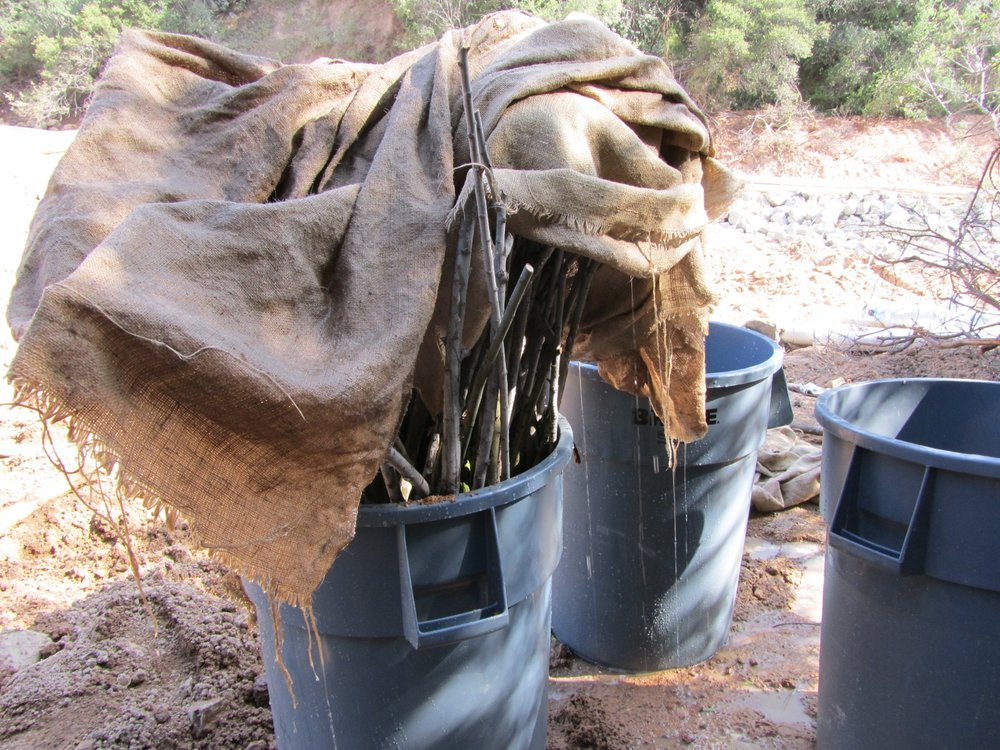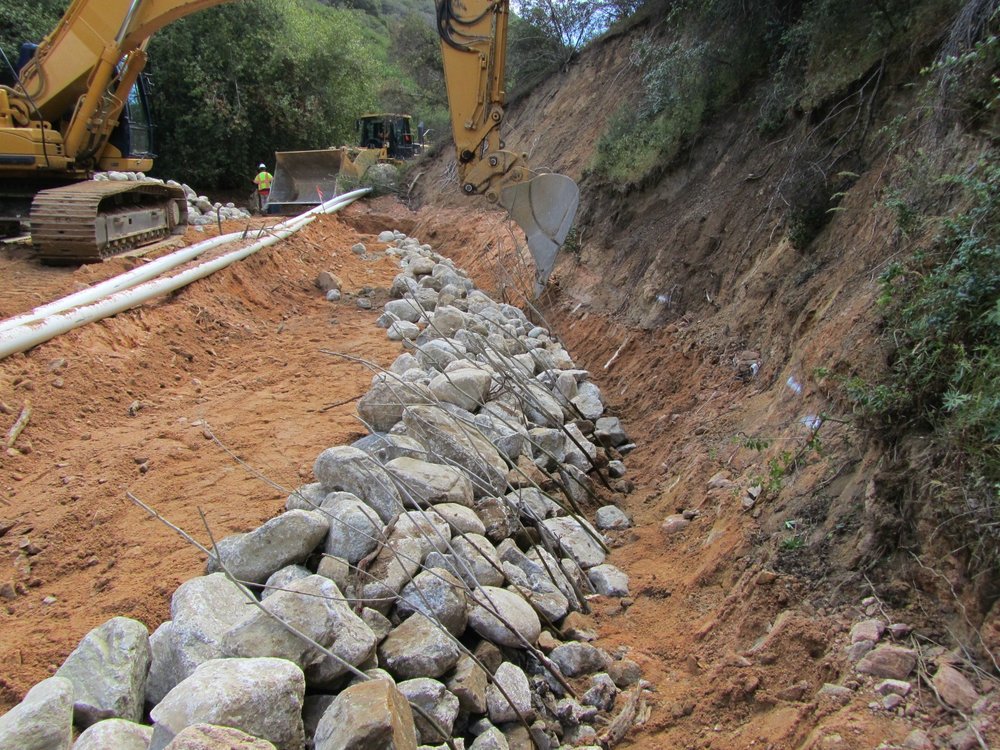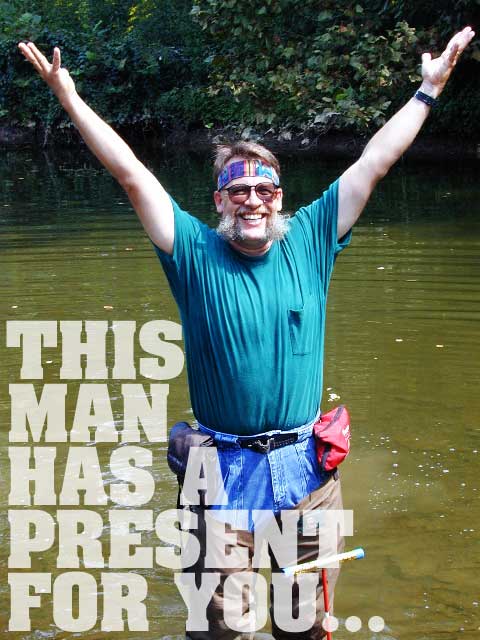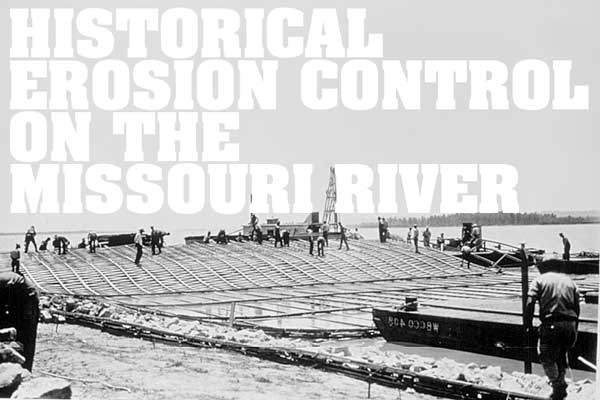25 Sep Schenk Creek – Before & After
 Hey All
Hey All
 Remember the Schenk Creek project? It was the little seasonal creek below Highway 330 in San Bernardino National Forest that got inundated with DG sediment when a landslide occurred in the winter of 2010. Remember District 8 had to design and build some really huge wire mesh-reinforced walls and also remove over 16,000 CY of material from the creek.
Remember the Schenk Creek project? It was the little seasonal creek below Highway 330 in San Bernardino National Forest that got inundated with DG sediment when a landslide occurred in the winter of 2010. Remember District 8 had to design and build some really huge wire mesh-reinforced walls and also remove over 16,000 CY of material from the creek.
I got called in to restore the stream. See this post for more information.
Well, Jason Bill recently sent me some photos taken on August 3rd – Three months later. See how well the willow worked when incorporated into the restoration work.
The most interesting and informative techniques/prescriptions used for the stream bank stabilization included Longitudinal Stone Toe (LST) , Live Siltation , and the RSP Soil Flapping. The LST and Live Siltation techniques are available in the ESenSS Manual (or NCHRP Report 544) and the RECP Soil Flapping Technique comes from a recent course we are teaching for Caltrans Landscape Architecture (See https://www.dot.ca.gov/hq/LandArch/ec/steep_slopes/recp_wrap.htm)


The Soil Flap method is really beneficial for steeper slopes (>2H:1V) that require a some reinforcement. The horizontal element embedded in the slope provides geotechnical reinforcement while the “flapping” element provides erosion control. Soil Flaps are not as strong as Soil Wrap but they are super cost-effective and constructible!
https://www.dot.ca.gov/hq/LandArch/ec/steep_slopes/recp_flap_with_brush_layering.htm

Just a reminder that these techniques and more are available on ESenSS or in the NCHRP Report 544, 2005. See index to techniques PDF
Hope you all recall that soaking willow branches for a few days to a month will increase the successful establishment.

Some more photos here to see how the structures were built in Schenk Creek back in May.






Hope to see you all out in the field and keep your willow branches wet!!
-John




















